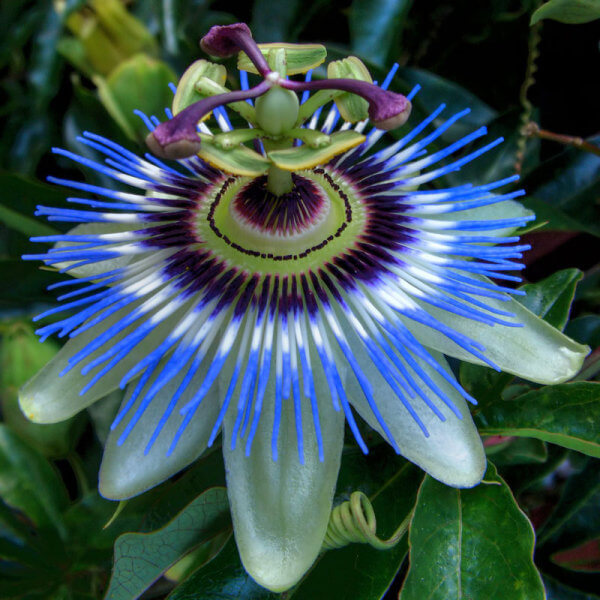
Passion fruit, also known as Passiflora, is a tropical vine that produces beautiful and fragrant flowers, followed by delicious fruits. Here's a step-by-step guide on how to grow passion fruit flowers:
Climate: Passion fruit thrives in warm and tropical climates. It requires a minimum average temperature of 65°F (18°C) to grow successfully. If you live in a colder region, consider growing passion fruit in a greenhouse or as a container plant that can be moved indoors during colder months.
Sunlight: Passion fruit requires full sun to thrive. Choose a location in your garden that receives at least 6 hours of direct sunlight per day.
Soil: Passion fruit prefers well-draining soil that is rich in organic matter. A sandy loam or loamy soil with a pH range of 6.0-7.5 is ideal. If your soil is heavy or clay-like, amend it with organic matter such as compost or well-rotted manure to improve drainage and fertility.
Planting: Passion fruit can be propagated from seeds or cuttings. If using seeds, soak them in warm water for 24 hours before planting to soften the hard outer seed coat. Sow the seeds about 0.5-1 inch (1.3-2.5 cm) deep in small pots or seed trays filled with well-draining potting mix. Keep the soil consistently moist and provide bottom heat to aid germination. Transplant the seedlings into larger pots or the garden once they have developed a few sets of leaves.
Trellis or support: Passion fruit vines are vigorous climbers and require support. Install a trellis or fence where the vine can climb and spread. Make sure the support is sturdy enough to hold the weight of the mature plant.
Watering: Passion fruit plants need regular watering to keep the soil consistently moist. Water deeply but avoid waterlogging, as excess moisture can lead to root rot. During hot and dry periods, increase the frequency of watering to ensure the plant doesn't become stressed.
Fertilization: Passion fruit plants benefit from regular feeding to support healthy growth and fruit production. Apply a balanced, slow-release fertilizer or a high-potassium fertilizer every 4-6 weeks during the growing season. Follow the package instructions for the recommended amount.
Pruning: Pruning passion fruit vines helps maintain their shape, promotes airflow, and encourages better fruiting. Prune away any dead, damaged, or weak growth. Regularly remove any excess growth to control the size of the vine and prevent it from becoming too dense.
Pollination: Passion fruit flowers require cross-pollination to set fruit. They are usually pollinated by bees, butterflies, or other insects. To attract pollinators, provide a variety of nectar-rich flowers in your garden. If pollinators are scarce in your area, you can hand-pollinate passion fruit flowers by transferring pollen from one flower to another using a small brush or cotton swab.
Fruit harvest: Passion fruit typically takes 6-9 months to mature and be ready for harvest. The fruits will turn from green to their respective color (usually purple, yellow, or orange) and become slightly wrinkled. Gently twist or cut the fruit from the vine when it is fully ripe.
Pest and disease control: Passion fruit vines can be susceptible to pests such as aphids, mites, and fruit flies. Monitor your plants regularly and take appropriate measures if you notice any pest infestations. Common diseases include fungal infections like powdery mildew and root rot. Proper watering, good air circulation, and maintaining healthy plants can help prevent disease issues.
With proper care and attention, you can enjoy the beautiful and fragrant flowers of passion fruit vines and the delicious fruits they produce.

No comments:
Post a Comment